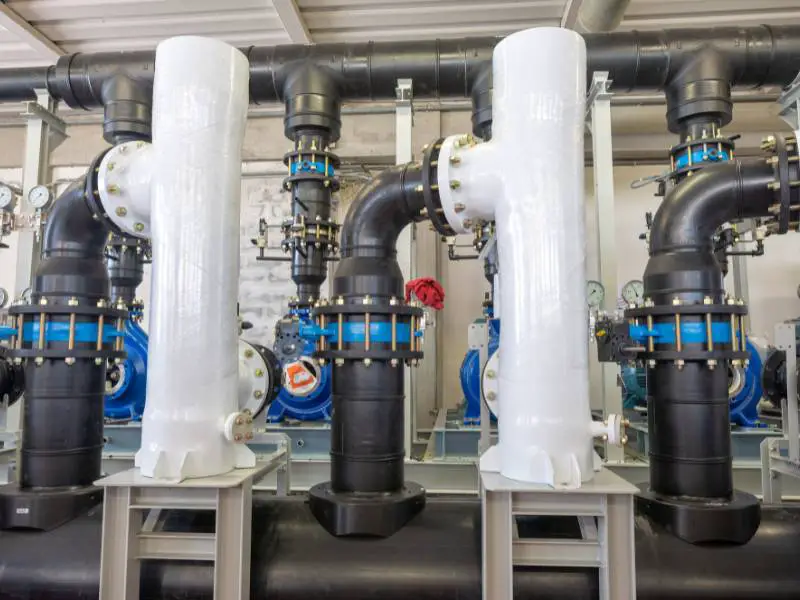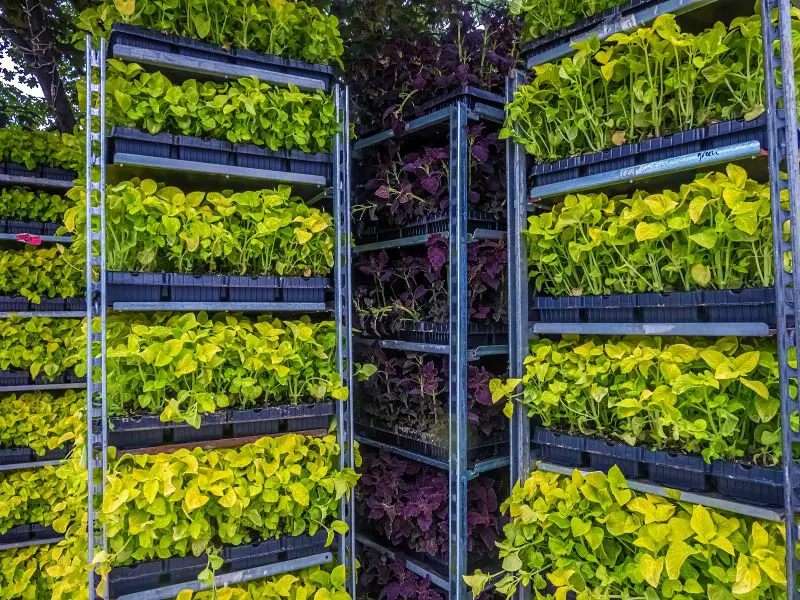What are the leading green technologies?
The list of the top green technologies is endless! It’s not just about renewable resources and minimizing pollution; it’s also about helping preserve our natural ecosystem by being aware of what we use.
With all these technological advancements, you’ll be able to enjoy your world in a whole new light. Are you ready to find out some cutting-edge technology? Let’s go!
Green Technologies: Leading the Charge Towards a Sustainable Future
Green Technologies: The Forefront of Sustainable Evolution
In the 21st century, green technologies have emerged as the lighthouses guiding us through the stormy seas of environmental challenges. This surge in green technologies underscores their immense importance in shaping a more sustainable world.
As our planet confronts the adverse effects of climate change and dwindling natural resources, the solutions presented by green technologies become invaluable. Diving deeper, green tech is an innovative amalgamation of techniques and tools crafted meticulously to foster sustainability while dramatically reducing the environmental impact of our actions.
Green Technologies in Renewable Energy: Harnessing the Power of Nature
The realm of green technologies is vast and varied. One of the flagship segments of green technology is renewable energy. Unlike fossil fuels, which are finite and environmentally damaging, renewable energy sources are ever-replenishing.
Solar Panels and Solar Energy: Representing a shining beacon of green technologies, solar panels capture the sun’s immense power. By converting solar energy into electricity, we not only harness a limitless power source but also ensure efficient energy production with a minimal carbon footprint.
Wind Turbines and Wind Energy: Wind energy, another prodigious offspring of green technologies, leverages the kinetic power of the wind. By erecting wind turbines, this kinetic energy is converted into usable power, exemplifying green technology’s prowess in innovating sustainable solutions for our escalating energy consumption.
Green Technologies: A Weapon Against Greenhouse Gas Emissions and Global Warming
The specters of global warming and increasing greenhouse gas emissions, primarily carbon dioxide, loom large over humanity. Fossil fuels, upon combustion, release voluminous amounts of carbon into our atmosphere.
Enter green technologies with solutions like carbon capture—aimed at trapping and storing these emissions. Furthermore, the rise of electric vehicles powered by efficient fuel cells demonstrates the capacity of green technologies to innovate, reducing our overall carbon footprint in the process.
Green Technologies Transforming Waste Management
Waste, and especially food waste, presents a monumental challenge. Yet, green technologies are not far behind with transformative solutions. Waste management systems, backed by green technology, are making waste disposal more efficient, while recycling methodologies are ensuring minimal waste production. One standout innovation within green technologies is vertical farming. By promoting urban agriculture and curbing food waste, it showcases how green tech can reshape traditional practices.
Moreover, cutting-edge green technologies are turning the tables by converting waste into energy, marrying energy production with waste reduction.
The Electric Revolution Driven by Green Technologies
The term electric has transcended its traditional boundaries, and green technologies are at the helm of this transformation. Electric vehicles, underpinned by fuel cells and advanced energy technology, are revolutionizing transportation.
By minimizing carbon emissions and maximizing energy efficiency, these vehicles are a testament to green technology’s transformative potential.
Green Technologies: A Comprehensive Approach to Sustainability
Climate tech and clean technology, both subdomains of green technologies, advocate a holistic approach to our planet’s environmental challenges.
Beyond the paradigms of energy technology, green technologies envision a broader spectrum of sustainability, encompassing water conservation, waste reduction, and more.
A sustainable future, after all, isn’t just about energy production. It revolves around efficient waste management, effective recycling, and a concerted effort to curb food waste, all under the vast umbrella of green technologies.
Green Technologies: Crafting the Blueprint for a Sustainable Tomorrow
The path to a sustainable future is intricately intertwined with the advancements in green technologies. Every solar panel erected, each innovation in waste management, and every stride in clean technology is a testament to our commitment to a greener tomorrow.
By wholeheartedly embracing green tech, understanding our energy consumption, and championing sustainability, we’re not just hoping for a brighter, more sustainable future; with green technologies at our side, we’re diligently building it.
List of Top 10 Green Technologies
1. Making Oil Out of Nothing
Thermo-depolymerization is a process that can convert any carbon-based waste into oil. This process is very similar to how oil is produced by nature; however, with this technology, the process can be sped up by millions of years to achieve the same byproduct.
Examples of carbon-based waste include turkey guts and used tires. The proponents of this system can produce 600 pounds of petroleum with a ton of turkey waste.
2. Extracting Salt From Salt Water
This technology allows us to do something that might be considered impossible: extracting all the salt from salt water! This may not seem like a big deal, but it solves one of the biggest problems: freshwater scarcity.

We already have the technology to desalinate water; however, it requires vast amounts of energy to operate. The main problem is that it uses lots of pressure and needs mechanical pumps to move the water through membranes at the rate required to make this technology worthwhile. With a new system, the process happens in a vacuum. This, in turn, eliminates all need for mechanical power and cuts down on costs significantly.
3. Growing Meat From a Bucket of Enzymes and Agents
Imagine a bucket of enzymes and rapid-growth agents producing protein food. To convert grass into a steak, a cow needs two years of food, water, land, and methane output. Laboratory-grown beef removes all of these issues. You may think,
“I will never consume that kind of food but what do you think your great-grandparents would think of Fritos, though?”
– David Moise
4. Quantum Processing Computer Capacity
In this fascinating time of technology, we have more power at our fingertips than ever before. Quantum computing and quantum communication are only beginning to emerge, but the possibilities are endless. Quantum computing provides the computing power necessary to construct virtually any universe model. At the same time, quantum communication allows for super fast and encrypted communication between quantum computers.
The potential applications of this technology are some of the most exciting things we have ever seen, but they are also highly complex and challenging to create. These technologies will profoundly affect our lives in an indeterminable way, but one thing is sure: we’ll find our lives changing faster than ever before.
5. Harnessing Energy With Fabric
This intriguing green invention includes capturing our kinetic energy. This smart fabric, developed by the Georgia Institute of Technology, is thin, flexible, and creates power as it moves. This might be used to monitor health signs and power tiny electrical gadgets. Can you imagine how beneficial this would be if you ran out of battery while out running? How much power could be created by the thousands of people who run Marathons on a regular basis?
6. Harnessing Hydrogen Through Green Technologies
The future of hydrogen, backed by green technologies, looks promising. With this advancement, we could tap into an unlimited energy source that isn’t just renewable. Hydrogen, being the most abundant element in the universe, offers immense potential. Yet, harnessing it requires specialized tools.
You can’t simply burn hydrogen gas like fossil fuels; it demands a certain process to convert into energy. But with green technologies paving the way, hydrogen utilization promises to be both convenient and eco-friendly.
7. Green Technologies in Solar-Powered Web Connectivity
The design world is progressively embracing green technologies, making energy consumption more efficient. A clear manifestation of this trend is the rise of low-energy aesthetics in web interfaces.
However, the real game-changer might be networks designed with an emphasis on solar energy optimization. Imagine green technologies enabling solar-powered web servers, positioned perfectly to capture the sun’s zenith, powering cutting-edge tech solutions.
8. Green Technologies in Autonomous Buildings
Buildings that are self-sufficient represent the pinnacle of green technologies. Designed to operate without relying on external infrastructure like the electric power grid or gas grid, these structures are a testament to sustainable living.
Solar panels, a flagship of green technologies, harness the sun’s energy. With recent innovations in design, these panels can now produce both heat and electricity, propelling buildings toward a self-reliant future.
9. Stacking Vertical Layers of Gardens and Farms
Vertical farming is a method that reduces our impact on the environment and can address our issues with food production. The idea is to grow food in layers piled vertically rather than in rows across the ground. In this way, we could produce an abundance of food in a much smaller space. This is excellent news for the environment because the more food we have in a smaller area, the less land is needed to house the farming and agricultural industry.

Vertical farms are taking off, and they can be found worldwide. There is one that has been operating in Chicago for years. There’s so much potential with vertical farming that cities like London and Hong Kong plan to build their first vertical farms and a few other cities worldwide.
10. Printing 3D Houses That Are as Strong as Any House
The construction industry is one area that has the most significant impact on climate change. Cement production is responsible for 8 percent of global greenhouse gas emissions, which is difficult to prevent because it is a chemical step in manufacturing cement. The construction industry is also one sector with the most significant economic impact on climate change.
One of the benefits of using this system is that it makes it possible to use local materials as raw materials, such as soil clay, sand, or plant fibers. This eliminates the need to use cement and can reduce by as much as 95 percent the requirement to transport materials, which is frequently one of the most significant obstacles to construction in developing countries and is also a source of greenhouse gas emissions.

Bottomline
We have the technology to stop the adverse effects of climate change. However, it may not be as easy as you think. There are many different ways that climate change can be prevented, and we need to work hard to find solutions that will benefit us all.
Technological advancements are already changing our lives, and they will only get faster. The only thing left for us to do is move away from the fast-paced consumer society we live in today, and that’s something that I hope we can all start working on right now.
Discover the top sustainable technologies, sustainable investing, and the best solar panel for your investment.


2 thoughts on “10 Cutting Edge Green Technologies That Will Help the Planet”